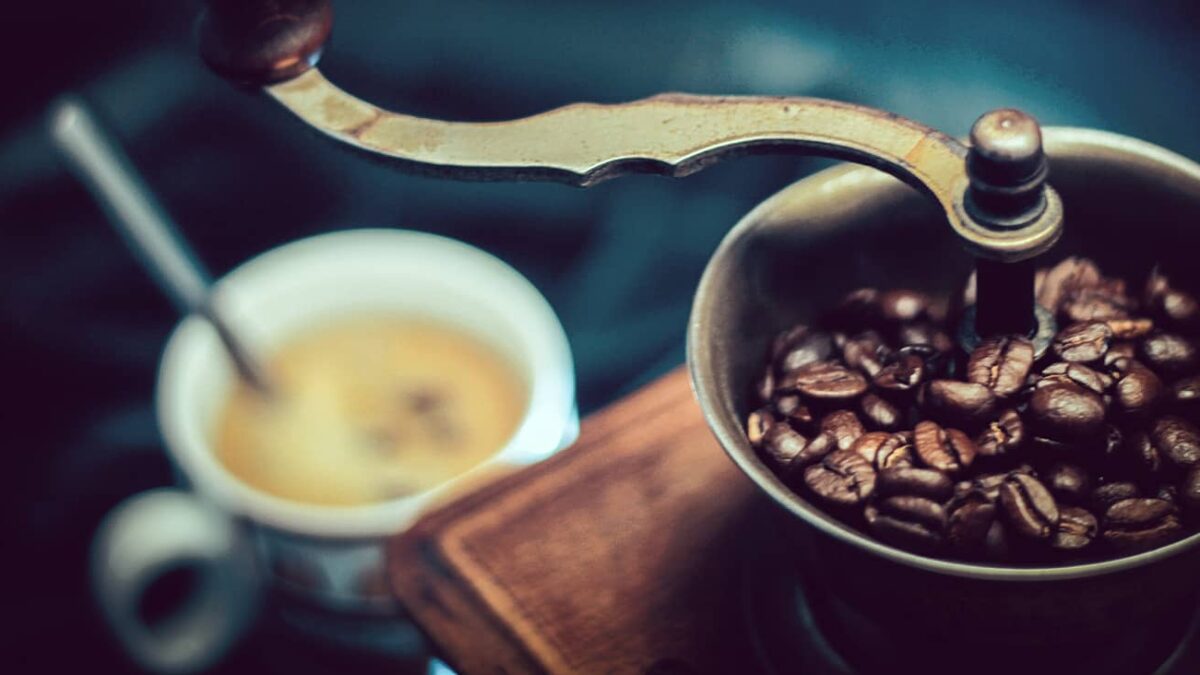It’s a matter of personal preference.
Firstly, you need to decide between blade grinders and burr grinders.
Blade grinders – usually the cheaper option – slice the coffee beans into multiple parts. With these, the grind size is controlled through timing (the longer you grind, the finer the grind). But you can end up with an uneven grind, with lumpy bits – not great for espresso blending in particular.
Burr grinders have two burrs, one that stays still and one that rotates. They crush the beans rather than slicing them, which results in a more precise, consistent grind. With more advanced models, you can adjust the distances between the parts to get different size grinds. This is ideal if you like to experiment with different brew types.
Then, you need to decide between electric and hand-cranked.
With a manual grinder, we can’t sugar-coat it – it requires some effort. Grease up those elbows and start turning that handle! The good part is how satisfying it is to hear the bbbrrrrr of the beans grinding, and getting those subtle aromas slowly making their way around the room.
But it’s the same reason people like to grow their own vegetables and cook for themselves – sure, it’s a bit of work, but the journey is part of the enjoyment, and the end result is pure satisfaction. And when you can have a beautifully-made manual coffee grinder like the Hario Skerton in your kitchen, it’s a sight to behold.
As for electric coffee grinders, you’ve got a few options. They are, of course, easier to use. Just chuck the beans in and let it work its magic. It might take a few goes to figure out the exact amount of beans for your preferred brewing type. They do tend to be a little loud, but that’s par for the course. (It’ll wake you up in the morning, though – just like the coffee).
The fancier the grinder, the more expensive it’ll be. Some have all kinds of features, like different grind settings, adjustable hoppers, speed dials, auto-timers, and more.
The most important thing to remember is to get something that’s durable. That means established brand names, quality materials, and positive reviews.
How to clean your coffee grinder
Over time, bits of ground coffee will build up in the crevices of your grinder. This is normal up to a point, but stale grinds will eventually affect the flavour of your coffee, so it’s best to regularly clean it out. This is also necessary if you notice it starting to take longer to grind than usual. A light dusting once a week is a good idea, along with a deeper clean once a month.
Grinders usually come with a brush you can use to get out the looser bits – if you can’t find one, use a toothbrush. Toothpicks are also useful, and you could also use a can of compressed air (as used for cleaning sandwich crumbs out of computer keyboards!).
The most important thing is to not use water – introducing moisture into the grinder can cause rust, which is all kinds of trouble for grinding performance.
For electric grinders, in most cases, you’ll be best off referring to the manufacturer’s instructions (or consulting YouTube, if the manual has gone walkabout). But the fundamentals remain – unplug it, remove the constituent parts, and clean the burrs and any part that comes into contact with the beans.
Some recommend you use dry white rice to clean your grinder, by throwing it in as if it were coffee, and processing it through the grinder. The thinking is that it picks up coffee residue along the way. Try this at your own risk – while it might work wonders, it could damage the burrs or leave residues if you pick the wrong rice.




